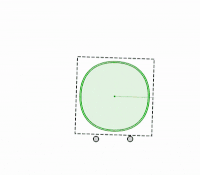|
x125ihk [at] gmail [dot] com (click to unscramble) I'm a research scientist at Boston Dynamics, where I work on machine learning for the Atlas humanoid robot. I earned my Ph.D. in Robotics from CMU, advised by Michael Kaess. I was also a part-time researcher at FAIR (Meta), where I worked on the manipulation and tactile sensing team. My thesis enabled robots to learn from interaction using vision and touch. |

|
Updates
|
|
NeuralFeels is published in Science Robotics and featured as cover of November issue (spotlight article). |
|
|
My work on Atlas was featured in their autonomous demo (IEEE, TechCrunch, Verge). |
|
|
I've moved to Greater Boston, to work with the Atlas team at Boston Dynamics (hello). |
|
|
I've defended my Ph.D., here's my talk and thesis! |
|
|
The pre-print for NeuralFeels is out, read it here. |
|
|
Our work RotateIt, led by Haozhi, was accepted to CoRL 2023. |
Click for more updates
|
|
Spending the summer as a research scientist intern at FAIR Menlo Park on visuo-tactile manipulation! |
|
|
MidasTouch was showcased at CoRL 2022 with a live demo. |
|
|
Successfully passed my Ph.D. thesis proposal! |
|
|
MidasTouch was accepted to CoRL 2022 as an oral. |
|
|
We've extended iSDF for neural mapping with the Franka robot, code here. |
|
|
Organized the Debates on the Future of Robotics Research workshop at ICRA '22 |
|
|
Spending the summer at FAIR Pittsburgh working on pose tracking from touch |
|
|
ShapeMap 3-D was accepted to ICRA 2022, with an open-source implementation. |
|
|
Presented at the Tartan SLAM series on our working on perception for planar pushing, video here. |
|
|
Tactile SLAM was the ICRA 2021 best paper in service robotics finalist! |
Research |

|
Neural perception with vision and touch yields robust tracking
and reconstruction for in-hand manipulation |

|
A visuotactile transformer gives us general dexterity
for multi-axis object rotation in the wild. |

|
Where's Waldo? but for robot touch: tracking a robot finger
on an object from geometry captured by touch. |

|
Online reconstruction of 3D objects from dense touch
and vision via Gaussian processes. |

|
Full SLAM from force/torque sensing for planar pushing:
combining a factor graph with an implicit surface. |

|
Balancing volumetric exploration and pose uncertainty
in 3D underwater SLAM via SONAR submap saliency. |

|
Active SLAM with multi-hypothesis state estimates
for robust indoor mapping with handheld sensors |


|
Dealing with refraction in underwater visual SLAM,
inspired by multimedia photogrammetry. |


|
We build an underwater platform comprising of stereo,
IMU, standard + structured lighting, and depth. |


|
Annual Meeting of the Lunar Exploration Analysis Group, Nov 2016
Tracking a lunar rover's kinematic state through self-perception
with a downward-facing fisheye lens. |

|
We understand free-hand sketches through human gaze
fixations based on visual saliency. |
|
Last updated: Dec 2024 |